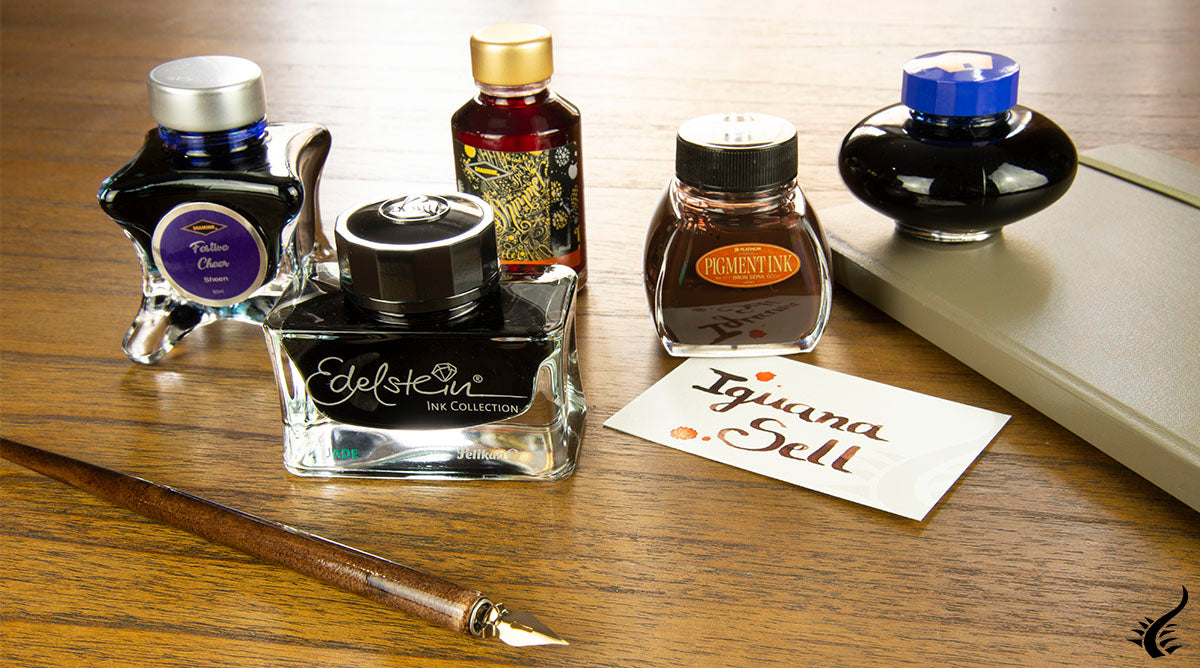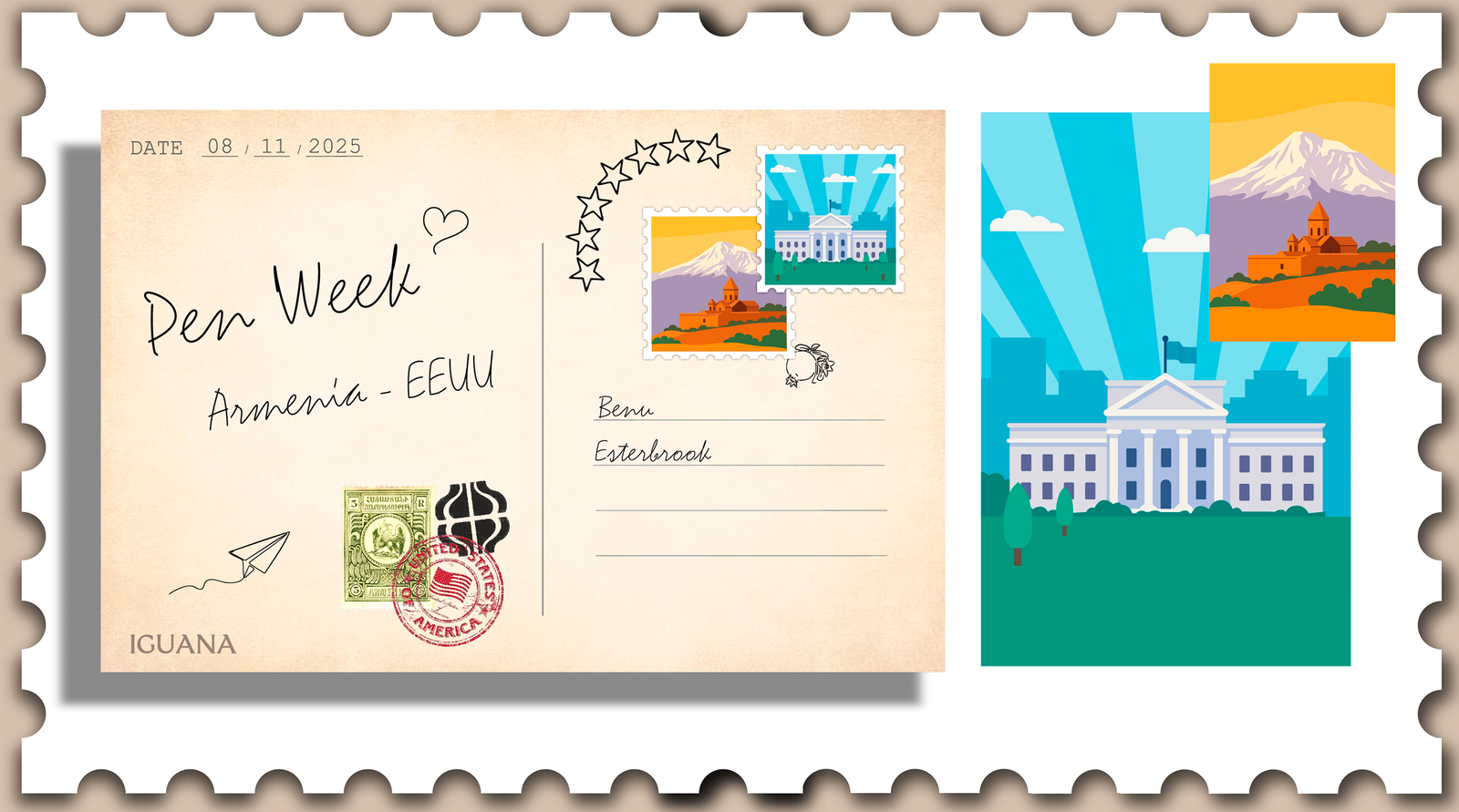Pens
Accessories
LIGHTERS
Inks: All you need to know
September 10, 2020 6 min read 1 Comment

The ink market has evolved greatly over the last thirty years. The options are diversified, going from the iconic blue, black and red; to a range where we not only choose the colour, but the presentation, the components or the ink density will also be factors to take into account. While this makes the choice difficult, a basic knowledge of ink is enough to discover its infinite possibilities and thus enhance the writing experience with your fountain pen.
All you should know about inks
Cartridge or Ink bottles?
What are the advantages and drawbacks of using an ink bottle?
The cartridges are very convenient because of their user-friendliness and portability. Although they have a lower initial cost, in the long term they become the most expensive option.
With the ink bottles, it's just the opposite, initially, they are more expensive but they become more profitable over the long term. This is because, generally, it will be necessary to buy the converter separately. Similarly, they are more complicated to carry and transport although, undoubtedly, the experience of filling a fountain pen with ink is part of its charm. In addition, this experience will also be enriched by the wide variety of colours available, even in waterproof inks.
Ink components
What is the ink made of? How is it made? Is it toxic? Can I use the ink from a fountain pen in a rollerball? Is the fountain pen ink the same as a ballpoint uses? Can I use old ink?
Essentially, the ink is water and a colouring element or dye, which is what will give the ink its distinctive characteristics.
- Dye: Water-soluble, it is the component that provides the colour and other distinctive properties to the ink, such as pigments.
- Stabilizers, such as glycerine, to ensure optimal density: if the ink is too viscous, it may not flow. But if it is too liquid, the ink will drip even before you have touched the paper.
- Solvents: Water is the main solvent used in fountain pen ink. This is not the case with marker ink, which is alcohol-based. Here lies one of the reasons why the writing experience is different from a rollerball or a ballpoint pen. While rollerball ink is water-soluble, like fountain pen ink, the ballpoint pen ink is oil-based. Therefore, writing with a rollerball pen guarantees an experience that is closer to writing with a fountain pen, softer and more fluid, although it has less permanence and takes longer to dry than if you were writing with a ballpoint pen. In the case of very old inks, some of the water may have evaporated, so that the ink has become denser and therefore it is riskier to use it. We can add a little distilled water.
- Other additives: As they are water-based, no ink is completely water-resistant. Manufacturers will add other components, such as resins, to ensure better molecular adhesion to the cellulose of the paper, thereby achieving a waterproof ink. Similarly, water in combination with other organic compounds carries a certain risk of emerging microorganisms and fungi, this is the reason why biocides are also often used. Besides, other additives are used to obtain flavoured, brilliant or fluorescent inks.
Types of inks
Are all inks waterproof? Why is the pH of the ink important? Can I use Indian ink for my fountain pen?
- Non-pigmented, They are the most common and recommended ink because of their ease of use, maintenance and cleaning, as well as the wide variety of options available. Diamine has a catalogue of over 100 different colours. In general, they are not water-resistant and writings made with these inks tend to degrade over time. Waterman is available in just over a dozen colours, among two of them stand out: Serenity Blue and Absolute Brown. Waterman and Diamine inks are essential for any desk due to their good performance on any paper and their great quality-price ratio.
- Pigmented. Pigments, before being mixed with water have a powdery consistency. As they are not soluble in water, the particles bind to the paper guaranteeing a longer permanence; unlike non-pigmented particles, which discolour more easily. However, they should be used with caution because these same particles can adhere to the feeder of the fountain pen and impede flow. They should be cleaned regularly and the ink should not be allowed to dry inside the pen. In addition to the more complex maintenance, in terms of aesthetics, there is not as much variety of colours as with non-pigmented inks. This would be the case with Indian ink, where the pigment comes from soot. This ink is not recommended for fountain pens because of the great risk that it will quickly dry out and damage the feeder of the writing instrument. *Recommendation Iguana Sell: Platinum Pigmented Ink.
- Iron gall inks. The most used until the 20th century, since the invention of the fountain pen. The iron gall inks are made from iron salts and tannic acid derived from the fermentation of oak bark, combined with a binder, generally gum arabic. Due to their components, these are very permanent and water-resistant inks that, over the years and contact with air, turn black due to the oxidation of ferric ions. This is undoubtedly an interesting property to explore, which is also available in inks such as Platinum Forest Black or Cassis Black. However, its acidic pH makes it corrosive and the metallic components of the fountain pen that come into contact with it will get ruined with use.

- Scented inks. With essential oils that give them an aroma. They require more maintenance because of the residues that essential oils which they contain may be left.
- Shimmering or glittering inks. manufacturers such as Diamine have launched into the manufacture of shimmering inks, a safe option that can be very interesting for the most creative minds and the widest nibs (B). They should be shaken before their use and require more regular cleaning to prevent non-soluble solids components from damaging the pen.

Which ink should I choose?
When choosing your ink, the main rule is to have fun and find the one you love the most. However, we can take into account certain aspects of the ink that influence the aesthetics of our writings.
- The shade of colour, its intensity and its brilliance. One of the most decisive factors. We highlight Aurora Black; whose behaviour is highly appreciated among our clients because of its density and humidity. It is a saturated ink, which flows correctly providing an intense and vibrant black colour. Despite being non-pigmented, it offers great resistance to discolouration deterioration.
- Saturation. It refers to the proportional amount of colouring components. Low saturated inks are more transparent, take less time to dry and leave less residue in the feeder, while highly saturated inks are darker and brighter. This is the case of the Edelstein line with which Pelikan launched itself into the high-end ink market. Of high quality and at an affordable price, these are luxury saturated inks, of medium density and good fluidity. They are presented in an elegant bottle and are available in eight colours, which emulate the colours of precious stones ("Edelstein" is the German word for gem).

Creation of shadows: another property of the inks that generally go unnoticed but which we at Iguana Sell like very much is the ability of the ink to appear darker in some areas than others. When writing, the ink tends to flow towards the final stroke of the letters or the intersections between lines, and where it comes together it darkens as it dries, creating a gradient effect. - The fluidity of the ink. Fluidity will condition the amount of ink that is deposited on the paper and therefore the smoothness of writing. Non-pigmented inks flow very easily without clogging the feeder.
- Permanence. Bearing in mind that fountain pen ink is water-based, we must make sure to use a waterproof ink if we need our writings not to be spoiled by water. In the following image, we can see the different result between a non-pigmented and a pigmented ink if we pour a few dops of water over them.

- Maintenance. Non-pigmented inks are the most recommended and the most used because they are easy to clean.
It should be noted that the paper and the fountain pen will also be quintessential in the performance of the ink. Thus, low-absorbent papers tend to give brighter results with a higher shadow gradient, just as wetter pens will combine better with drier inks.
How to store ink correctly
Can I freeze it? Does the ink expire?
In general, it will be sufficient to close the bottle correctly when it is not being used, to avoid that due to high temperatures the water evaporates and the ink becomes dense or dry. For the same reason, and given that most ink bottles are made of glass, it is advisable not to expose it to direct sunlight for a long time.
When using the ink, especially if it is pigmented or shimmering ink, it is advisable to shake the ink bottle.
Finally, with regard to whether or not the ink can be frozen, in general, it is possible, as it is water-based. However, it should be done carefully so that when it changes state it will increase its volume, and the pressure could make the ink bottle explode. This is the very reason why if the ink is inside the converter, in the fountain pen, exposing it to low temperatures carries a great risk.
Some components of the ink, such as the ethylene glycol in Waterman inks or glycerine, make it difficult to freeze. Therefore, we cannot speak of one freezing temperature, it will depend on the additives that each ink has.
We invite you to discover the wide collection of ink bottles, cartridges and converters available at Iguana Sell. If you require more information do not hesitate to contact us.
It will be a pleasure to help you.
1 Response
Leave a comment
Comments will be approved before showing up.
Also in News

The art of writing: a journey that never ends – Day 7 of Iguana Pen Week
November 04, 2025 2 min read
Read More
United States & Armenia: Innovation and Art in Motion – Day 6 of Iguana Pen Week
November 04, 2025 4 min read
Read More
Germany: precision and functional design in every pen – Day 5 Iguana Pen Week
November 04, 2025 3 min read
Read More
Iguana | Blog
Recent Articles
- The art of writing: a journey that never ends – Day 7 of Iguana Pen Week
- United States & Armenia: Innovation and Art in Motion – Day 6 of Iguana Pen Week
- Germany: precision and functional design in every pen – Day 5 Iguana Pen Week
- France & Switzerland: Elegance and Precision in the Art of Writing – Day 4 Iguana Pen Week 2025
- Japan: Writing as an Art – Day 3 Iguana Pen Week
- Italy: Passion and Style in Every Stroke – Day 2 Iguana Pen Week 2025
- The journey of writing begins here – Day 1 Iguana Pen Week 2025
- Esterbrook x Peanuts, a lifelong friendship
- Timex x Peanuts: the watches that stole the world’s heart
- How to keep your Pilot Capless looking like new
Subscribe
Sign up to get the latest on sales, new releases and more …
50,000+ Satisfied Customers Our expert advisors are available Monday to Saturday, online and by phone.
60+ Official Brands Official warranty, original packaging, and stamped warranty card included.
15+ Years of Experience Specialists in writing instruments, watches, and premium accessories.
100% Secure Payment Interest-free finance available and all transactions are fully encrypted.


Janet Freer jones
September 12, 2020
Dose the nib makes any difference between inks